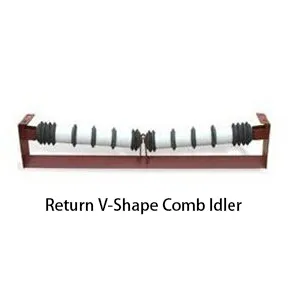 Afrikaans
Afrikaans  Albanian
Albanian  Amharic
Amharic  Arabic
Arabic  Armenian
Armenian  Azerbaijani
Azerbaijani  Basque
Basque  Belarusian
Belarusian  Bengali
Bengali  Bosnian
Bosnian  Bulgarian
Bulgarian  Catalan
Catalan  Cebuano
Cebuano  Corsican
Corsican  Croatian
Croatian  Czech
Czech  Danish
Danish  Dutch
Dutch  English
English  Esperanto
Esperanto  Estonian
Estonian  Finnish
Finnish  French
French  Frisian
Frisian  Galician
Galician  Georgian
Georgian  German
German  Greek
Greek  Gujarati
Gujarati  Haitian Creole
Haitian Creole  hausa
hausa  hawaiian
hawaiian  Hebrew
Hebrew  Hindi
Hindi  Miao
Miao  Hungarian
Hungarian  Icelandic
Icelandic  igbo
igbo  Indonesian
Indonesian  irish
irish  Italian
Italian  Japanese
Japanese  Javanese
Javanese  Kannada
Kannada  kazakh
kazakh  Khmer
Khmer  Rwandese
Rwandese  Korean
Korean  Kurdish
Kurdish  Kyrgyz
Kyrgyz  Lao
Lao  Latin
Latin  Latvian
Latvian  Lithuanian
Lithuanian  Luxembourgish
Luxembourgish  Macedonian
Macedonian  Malgashi
Malgashi  Malay
Malay  Malayalam
Malayalam  Maltese
Maltese  Maori
Maori  Marathi
Marathi  Mongolian
Mongolian  Myanmar
Myanmar  Nepali
Nepali  Norwegian
Norwegian  Norwegian
Norwegian  Occitan
Occitan  Pashto
Pashto  Persian
Persian  Polish
Polish  Portuguese
Portuguese  Punjabi
Punjabi  Romanian
Romanian  Russian
Russian  Samoan
Samoan  Scottish Gaelic
Scottish Gaelic  Serbian
Serbian  Sesotho
Sesotho  Shona
Shona  Sindhi
Sindhi  Sinhala
Sinhala  Slovak
Slovak  Slovenian
Slovenian  Somali
Somali  Spanish
Spanish  Sundanese
Sundanese  Swahili
Swahili  Swedish
Swedish  Tagalog
Tagalog  Tajik
Tajik  Tamil
Tamil  Tatar
Tatar  Telugu
Telugu  Thai
Thai  Turkish
Turkish  Turkmen
Turkmen  Ukrainian
Ukrainian  Urdu
Urdu  Uighur
Uighur  Uzbek
Uzbek  Vietnamese
Vietnamese  Welsh
Welsh  Bantu
Bantu  Yiddish
Yiddish  Yoruba
Yoruba  Zulu
Zulu Competitive Pricing for Quality Conveyor Idlers for Your Business Needs
Understanding Conveyor Idler Prices Factors and Insights
Conveyor idlers are crucial components in bulk material handling systems. Their primary function is to support the conveyor belt, facilitating smooth movement of materials across various industries, including mining, agriculture, and manufacturing. However, when it comes to selecting conveyor idlers, one of the key considerations is price. Understanding the factors that influence conveyor idler prices can help businesses make informed purchasing decisions.
1. Material Quality and Durability
One of the most significant factors affecting conveyor idler prices is the material used in their construction. Idlers are often made from steel, rubber, or plastic, and each material has different implications for cost and performance. For instance, steel idlers, while generally higher in price, offer enhanced durability and strength, making them suitable for heavy-duty applications. On the other hand, lighter materials such as plastic might be less expensive but may not withstand harsh environments, thus necessitating more frequent replacements. The initial investment in higher-quality materials can ultimately result in lower long-term costs due to reduced maintenance and replacement needs.
2. Design and Engineering
The design and engineering of conveyor idlers also play a considerable role in their pricing. Advanced designs that include features such as self-aligning capabilities, improved sealing to prevent debris ingress, and innovative roller configurations are often priced higher due to the added value they provide. For instance, self-aligning idlers help maintain the belt's position and minimize wear, which can save costs in the long run. Moreover, custom-engineered idlers tailored to specific applications can lead to increased efficiencies but may come with a premium price tag.
3. Brand Reputation and Manufacturer
conveyor idler price

The reputation of the manufacturer is another important factor influencing conveyor idler prices. Established brands with a track record of reliability and quality often charge higher prices because they offer warranties, extensive support services, and proven performance. On the contrary, lesser-known manufacturers may offer lower prices to penetrate the market, but this might come with uncertainties regarding product quality and longevity. Businesses must weigh these factors against their requirements, as opting for a well-regarded brand can mitigate risks associated with failure and downtime.
4. Market Demand and Supply
Just like most commodities, the price of conveyor idlers is also subject to market demand and supply dynamics. Fluctuations in demand due to changing economic conditions, increased industrial activity, or new construction projects can lead to price hikes. Conversely, if market conditions result in a surplus of idlers, prices may drop. For procurement professionals, being aware of these market trends can provide insights into when to buy to get the best value.
5. Volume and Purchase Agreements
Finally, the volume of purchase can significantly impact pricing. Manufacturers often provide discounts for bulk orders, reducing the per-unit cost compared to single-item purchases. Establishing long-term supply agreements can also secure lower prices and stabilize costs for businesses that require consistent replenishment of conveyor parts.
Conclusion
In summary, the price of conveyor idlers is influenced by various factors, including material quality, design features, manufacturer reputation, market conditions, and purchase volume. By understanding these elements, businesses can make better purchasing decisions that align with their operational needs and budget constraints. A well-informed choice not only optimizes initial costs but can also enhance the efficiency and longevity of conveyor systems, ultimately leading to improved productivity and reduced downtime in operations.
-
Revolutionizing Conveyor Reliability with Advanced Rubber Lagging PulleysNewsJul.22,2025
-
Powering Precision and Durability with Expert Manufacturers of Conveyor ComponentsNewsJul.22,2025
-
Optimizing Conveyor Systems with Advanced Conveyor AccessoriesNewsJul.22,2025
-
Maximize Conveyor Efficiency with Quality Conveyor Idler PulleysNewsJul.22,2025
-
Future-Proof Your Conveyor System with High-Performance Polyurethane RollerNewsJul.22,2025
-
Driving Efficiency Forward with Quality Idlers and RollersNewsJul.22,2025





























